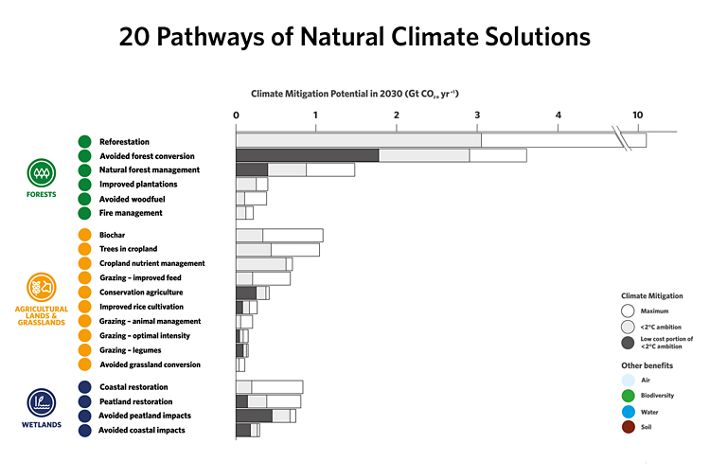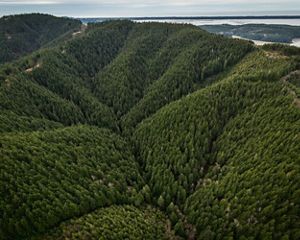
Nature’s Make or Break Potential for Climate Change
Study shows we’ve been underestimating nature’s role in tackling climate change
Key Takeaways
- Research by The Nature Conservancy and 15 other institutions, published in the Proceedings of the National Academy of Sciences, demonstrates that nature-based solutions provide up to 37 percent of the emission reductions needed by 2030 to keep global temperature increases under 2 degrees celsius-30 percent more than previously estimated.
- Additionally, using only cost-effective solutions, nature's mitigation potential is estimated at 11.3 billion tons in 2030—the equivalent of stopping burning oil globally.
- Many natural climate solutions offer additional benefits, such as water filtration, flood buffering, improved soil health, protection of habitat and enhanced climate resilience.
Though his business card says Director of Forest Carbon Science at The Nature Conservancy (TNC), Bronson Griscom introduces himself as an ecological accountant. Griscom radiates an optimism somewhat rare in seasoned environmentalists, especially when he discusses the “carbon economy” of nature: the everyday role that trees, grasslands and coastal habitats play in the carbon cycle. Griscom can measure the carbon impact of logging in old growth forests, or how well different forest ecosystems work as sinks for absorbing and storing carbon from the atmosphere. He helps link our economy with the economy of the biosphere.
In recent decades, forest use—Griscom’s area of expertise—has been widely studied for its climate impacts. Forest loss accounts for 8 to 10% of carbon emissions globally; tropical rainforests like the Amazon have become almost synonymous with land conservation, largely because they work as massive carbon sinks and are home to many of the world’s Indigenous peoples and endangered species.
WATCH NOW: Science shows that we can provide for a growing global population while protecting the ecosystems upon which all life depends.
Read the Study
"Natural Climate Solutions" in the Proceedings of the National Academy of the Sciences
Visit PNASBut other global ecosystems and managed lands—from farmlands and peatlands to seagrass and tidal marshes—have garnered less attention from climate regulators, both as a source of emissions and a potential mitigation solution. In fact, until recently no one had ever integrated the raw data on all the carbon that all ecosystems were already sequestering, and what the potential was for increasing carbon storage among all these habitats together, as Griscom and his team studied.
“I thought we would review a few papers and take an average to answer the question,” he says. “We were shocked to find that important gaps remained in answering the question: how much can lands contribute to solving climate change? So we took it upon ourselves to convene a large group of scientists across 15 research institutions to take a comprehensive look at this question.”
Answering that question became the highest priority for Bronson’s team, and the foundation for what has become the most comprehensive study on the role that nature can play in keeping global temperature increases to 2°C or below. They found that, with the right management, nature can play a bigger role than we realized.
Quote
Natural climate solutions offer up to 37% of the mitigation needed between now and 2030 to keep global temperature rise below 2°C.
Tapping Nature's Full Potential
Published on October 16, 2017 in the Proceedings of the Natural Academy of the Sciences, the paper offers a comprehensive roadmap for reducing carbon emissions through nature. The study is the culmination of a partnership between TNC and the Doris Duke Charitable Foundation that brought together more than two-dozen leading natural scientists and economists from fifteen research, educational and private institutions around the world.
The land-use sector is currently responsible for a quarter of greenhouse gas emissions. But this new study shows that this could change—and with concerted global action on land use over the next decade, nature can be a significant part of the climate solution.
The analysis found that the total biophysical potential for natural climate solutions while still taking account of food production needs is as much as 23.7 billion tons of carbon dioxide equivalent per year—approximately 30% more than previous, less comprehensive estimates.
In addition, the study’s economic analyses show that half of these natural climate solutions (11.3 billion tons CO2e) offer cost-effective mitigation opportunities, because they cost less than the future impacts of climate change, expected to cost society more than $100 per ton of CO2 in the atmosphere. These cost-effective NCS mitigation options offer up to 37% of mitigation needed between now and 2030 to keep global temperature rise below 2°C —the widely recognized target of the Paris Climate Agreement.
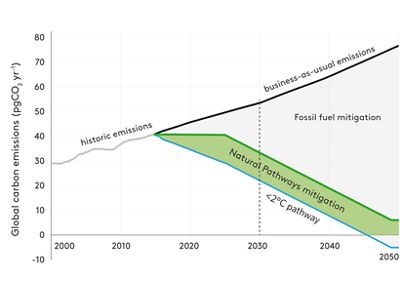
Pathways to Natural Climate Solutions
To synthesize the research, Griscom and his team developed a framework to distill the world’s “natural climate solutions”—the proven ways of storing and reducing carbon emissions in forests, grasslands (including agricultural and rangelands) and wetlands—into a taxonomy of 20 specific pathways that account for the full climate potential of nature.
In addition to covering three biomes, the pathways also look at different practices across a variety of economic scenarios that mitigate climate change, including the implementation of low-cost opportunities only ($10 per tonne CO2e or less).
Another striking aspect of these pathways is the additional benefits they provide. Most nature climate solutions—if effectively implemented—also offer water filtration, flood buffering, improved soil health, protection of biodiversity habitat, and enhanced climate resilience.
“The approach is synergistic,” says Justin Adams, managing director for Global Lands at TNC. “We can hit multiple targets of the UN Sustainable Development Goals if we get this right.”
There is, however, a catch: The world must act soon.
DIVE DEEPER: The NCS Pathways and their mitigation potential explained.
Mobilizing Climate Action
Assuming current business-as-usual trajectories, increased emissions entering the atmosphere, coupled with continued environmental degradation, will lessen the impact that nature can have. If natural climate solutions are mobilized over the next 10 to 15 years, they could provide 37% of the needed mitigation for global climate targets. But if action is delayed until after 2030, that number drops to 33%, and drops again to only 22% after 2050.
Over the past two years, the world experienced unprecedented global climate momentum. In September 2015, international leaders adopted the UN’s 17 Sustainable Development Goals, which aim to fight poverty, promote sustainability and address climate change. Shortly after, nearly 200 countries came together in Paris to adopt the world’s largest ever international climate treaty.
And despite recent setbacks, including the United States announcing its intention to withdraw from the Paris Agreement, many countries have moved forward implementing voluntary measures to limit emissions. And while natural climate solutions are part of many countries’ pledges, there remains a gap between promised action and realized climate progress.
Our Goals for 2030
Our planet faces the interconnected crises of rapid climate change and biodiversity loss.
the time for action is nowAs they are currently written, the Paris Agreement pledges still fall short, likely keeping warming around 4°C. Every five years, international representatives and negotiators will meet to ramp up ambition, but the current timeline for countries to end their reliance on fossil fuels while still maintaining development and economic growth does not align with what is needed to achieve climate stability. Barring a technological miracle, the world likely needs more time than it realistically has to move to full economic decarbonization.
“There’s a growing recognition that to get to below 2°C, we need to actively drawdown carbon from the atmosphere,” Adams says. “And while there’s lots of interest and investment in new technology solutions to capture and store carbon, this is new, experimental technology. Trees and other plants, meanwhile have already perfected this process over hundreds of millions of years of evolution—we’re unlikely to see a better carbon capture and storage technology than that which nature provides.”
This makes the findings from the 20 pathways particularly important: they provide a scalable near-term option that, combined with fossil fuel emission reductions, can put the planet on a 2° path by 2030. If world leaders hold off on concurrently investing in nature now, emerging technology will have to play an exponentially larger role in reducing emissions later on. “That’s a gamble on the future that can be prevented today,” Adams says.
“The rapid deployment of clean energy technologies currently being witnessed is truly inspiring, and we absolutely must press forward with the deployment of renewables, electric cars, energy efficiency and other methods for fossil fuel reduction,” Adams adds. “But we also need to see a similar level of investment in natural solutions, which are available now, are cost effective and greatly benefit communities.”
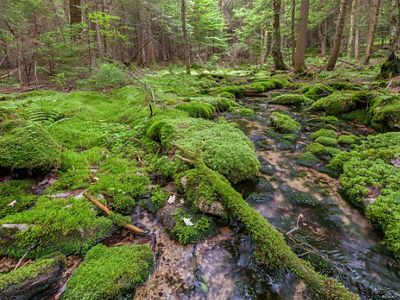

Investing Where It Counts
To understand some of the challenges to implementing natural climate solutions, consider the case of Indonesia. The country holds the world’s third largest tropical rainforest, but it has also experienced some of the fastest forest loss in tropical countries, primarily due to increased palm oil and forestry activities. The destruction of tropical forest ecosystems accounts for almost 50% of Indonesia's emissions, contributing to Indonesia’s position as the world’s tenth top emitter of greenhouse gasses.
At the same time, “development is a required process for Indonesia,” says Wahjudi Wardojo, TNC’s senior advisor for terrestrial policy in Indonesia. Any conservation efforts in Indonesia need to balance economic growth with sustainable development.
Wardojo is not alone in this situation—change agents working across widely different constituencies, ecosystems and governments face similar obstacles in implementing natural climate solutions. To convince land managers in both the public and private sector, they need more and better economic data that communicates the financial opportunities in deploying natural climate solutions.
It’s this universal need for strong science and economic data that Adams, Griscom and the study’s co-authors hope to support. The research and findings in “Natural Climate Solutions” can be used as a starting point to guide cost-effective implementation of the 20 natural pathways around the world.
Land-based climate solutions appear in more than 75% of individual country commitments to the Paris Agreement, yet renewable energy, energy efficiency and clean transport together receive nearly 30 times the amount of public mitigation investment that land-based solutions receive. Of the funding that is set aside for natural climate solutions, the vast majority tends to focus on tropical forest protection in developing countries.
Globally, forest pathways offer about half of the lowest-cost climate opportunities, while grassland and agriculture pathways account for a quarter, and wetlands nearly a fifth. But depending on a country’s geography and economy, any of these pathways could be significant for reducing emissions.
“The important thing is for people to realize that this isn’t pie in the sky. Natural climate solutions are real techniques that have climate value,” says Bill Schlesinger, former president of the Cary Institute of Ecosystem Studies. “The guts of the paper are the economic graphs which tell us under different economic scenarios what is realistically possible.”
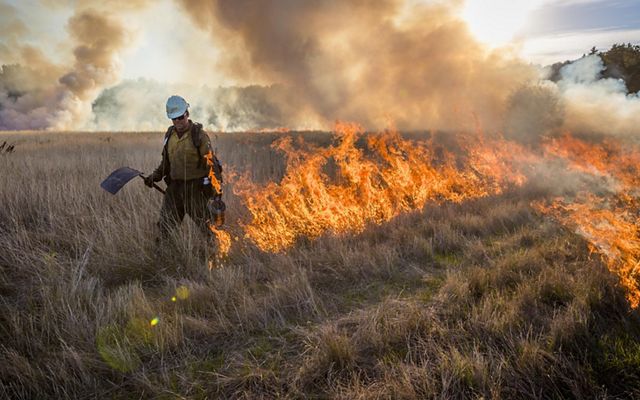
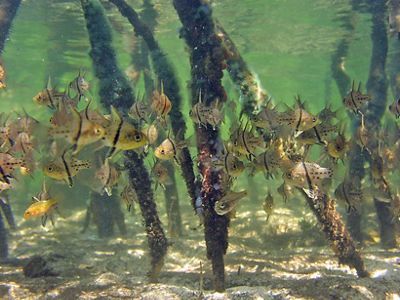
A United Path Toward Climate Stability
Building the coalitions needed to implement these solutions, even the most cost-effective ones, is easier said than done, especially if we’re to take action in the next decade. But one striking aspect of this new study is its demonstration that sectors often viewed as part of the problem—in particular forestry and agriculture—have a huge opportunity to step up and work as partners to transform working lands from carbon emitters to carbon sinks.
Around the world and in a variety of ecosystems, efforts such as these are already seeing wide-scale success. In Indonesia, for example, advances in reduced-impact logging techniques are helping to mitigate carbon emissions even as the timber industry continues to support economic growth. From farmers in Northern Africa fighting desertification by planting trees to New Guinean fishing communities planting mangroves to attract fish and store carbon, there are thousands more on-the-ground projects setting the foundation for what is possible.
If actions are taken now, nature can be an ally for sustainable development, economic growth and a low-carbon future—a future, as Adams puts it, where people and nature can thrive together.
NCS: Case Studies
Read our case studies to learn more about NCS in different geographies.
NCS Around the WorldThis symbiotic approach to conservation and climate work is increasingly resonating with international leaders and unexpected partners in the climate community. And while the world is still a long way from the level of private sector investment and government action needed for natural climate solutions to reach transformational scale, there’s an air of excitement surrounding those who work in this space.
“It’s incredible that to solve this relatively new problem—that seems bigger and uglier than anything we’ve ever tackled—we can also help solve other environmental challenges,” Bronson says. “Biodiversity loss in the wetlands and rainforests, nutrient-rich soil issues for farmers, issues surrounding indigenous people’s forest rights, and so on. Cue the 'Lion King' song—it’s all connected.”
Griscom’s positivity is contagious, but current climate projections provide a sobering reminder that even committed global climate actions are not yet enough to avoid the catastrophic effects of a warming planet. If the world does not keep global temperatures from rising above 2°C, the World Bank warns of “extreme heat-waves, declining global food stocks, loss of ecosystems and biodiversity, and life-threatening sea level rise," the effects of which will hit hardest in the world’s poorest regions, as is already being seen.
We can not hit the 2°C or below target through reforms in the energy, industrial and transportation sectors alone, Griscom says—preventing further loss of nature and investing in natural climate solutions are essential to climate stability. The good news is these opportunities are both abundant and come a broad array of other benefits. This is climate’s make or break moment, and, as Griscom puts it, “nature is the sleeping giant.”
Resources
-
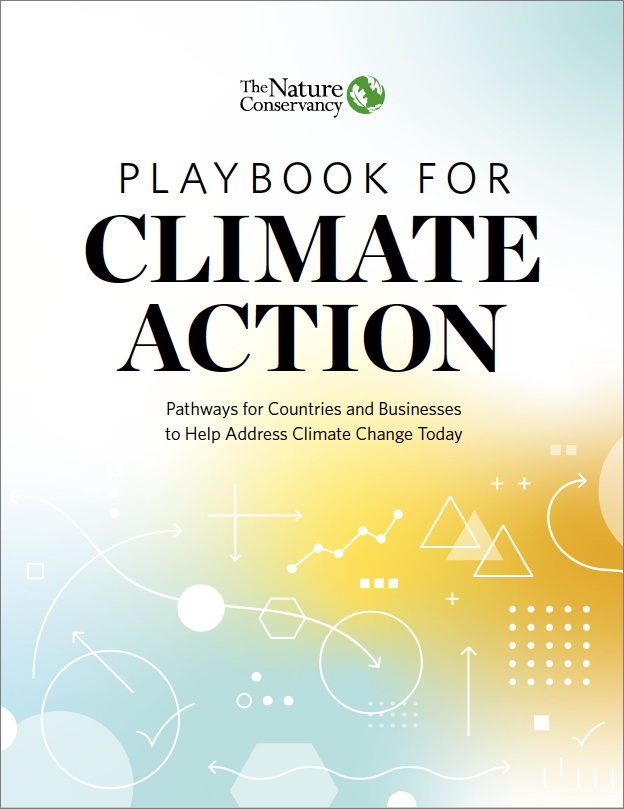
Playbook for Climate Action
PDF
This playbook showcases five innovative pathways for reducing emissions and climate impacts. A comprehensive suite of science-based solutions, the playbook presents actions governments and companies can deploy—and scale—today. Visit the Digital Version
Download
Global Insights
Check out our latest thinking and real-world solutions to some of the most complex challenges facing people and the planet today.
